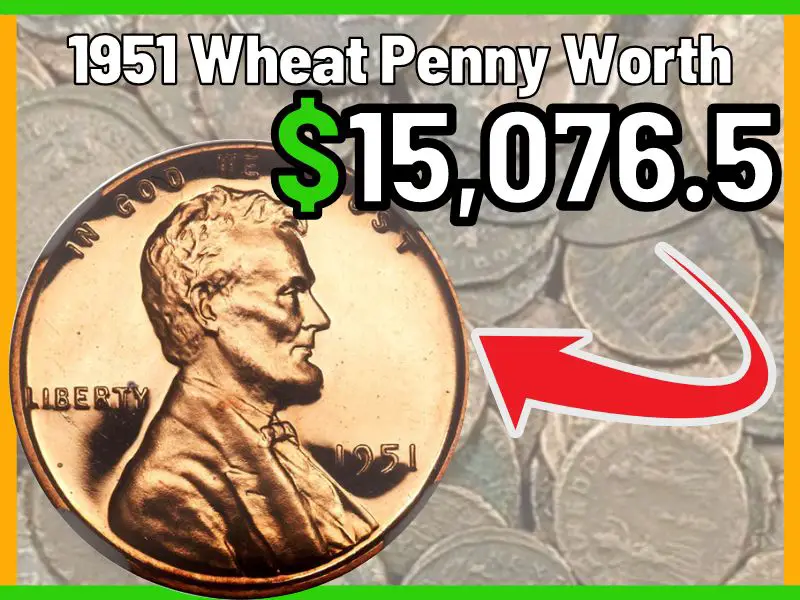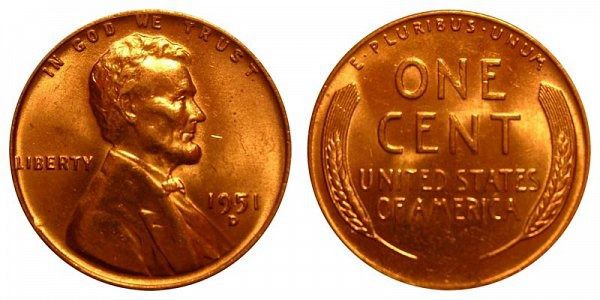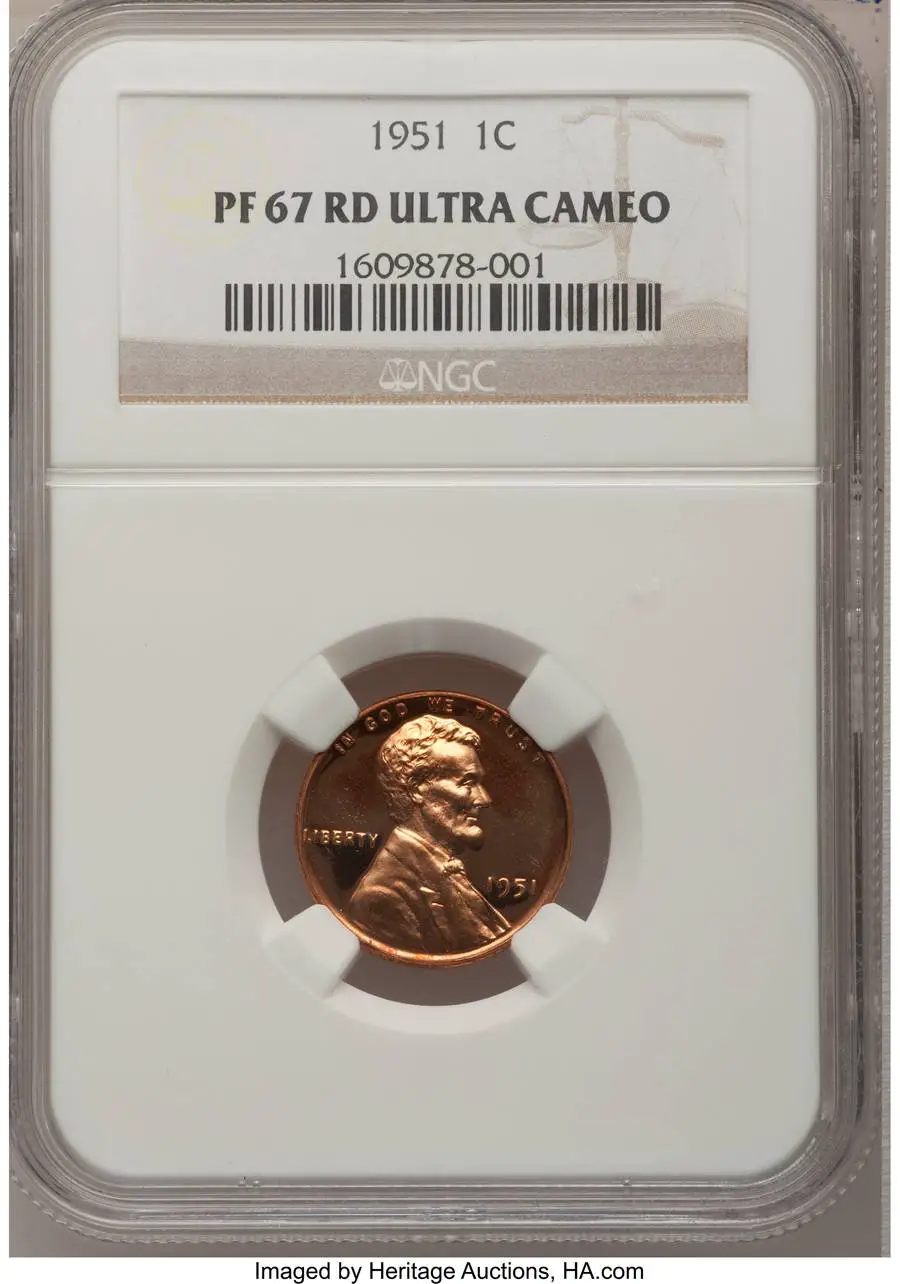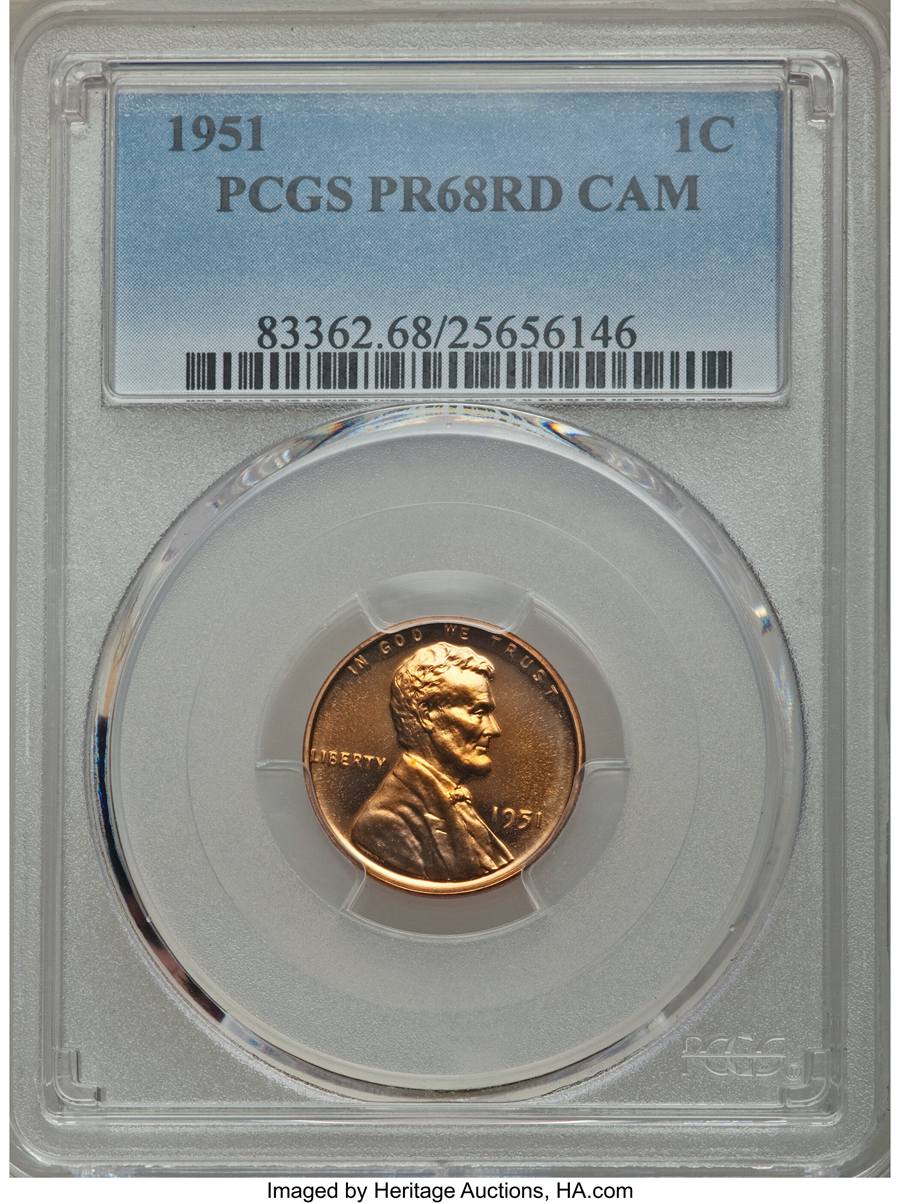
A 1951 wheat penny won’t fetch much because it is common and easy to come by. With one in extremely fine condition selling for around $0.05, it falls in the category of low-value coins.
However, some rarer varieties in excellent condition can sell for as much as $40+, including specific errors. Regardless of its theoretical value, most still fetch decent values depending on factors we will cover later in this article.
The wheat penny series remain the most popular one-cent coin, and it circulated for an impressive 49-year period. It is also famous among collectors because of its abundance and significance.
The Wheat Penny
The wheat penny replaced the Indian Head penny in 1909, and apart from the people’s positive reception, it was also the first coin to feature the bust of a past president. With a composition of 95% copper and 5% tin and zinc, the wheat penny has had several cases of altered components, yet its value remains the same.
History
When President Theodore Roosevelt took steps in 1904 to make several United States coins more artistic and aesthetically pleasing, he sought to hire Augustus Saint-Gaudens to redesign the cent, the double eagle, eagle, half eagle, and quarter eagle.
However, while Saint-Gaudens completed designs for the eagles, he couldn’t submit an approved design for the cent before his death in 1907. The US Mint later hired Victor David Brenner to design the cent because of his work on a Lincoln plaque he did in 1907.
At first, Victor David Brenner used a design for the coin’s reverse that turned out to be borrowed from French silver coins. He would return to work after the Mint’s rejection of the designs and produce the one that gained the president’s approval.
He used a bust of Lincoln for the coin’s obverse design and two ears of wheat for the submission that the Mint would use. This was how the coin series got its name as the Wheat Penny.
However, he still had to change his initials from his full surname on the obverse to the letters “V.D.B” at the bottom of the coin’s reverse.
1951 Wheat Penny
The 1951 wheat penny had the same components of copper, tin, and zinc, with a weight of 3.11 grams and a diameter of 19mm. With three facilities minting the coin in huge numbers, it is no surprise that it ended up with a high mintage.
In such numbers, errors are bound to occur; the most notable came from the Denver mint. On the upside, the 1951 wheat pennies with errors have a higher value than the regular because they are not as common.
Although this coin is popular among collectors, it is less about its value than its importance in building a Wheat Penny Collection. The reason is that it is one of the easiest to acquire at the start, hence its popularity among collectors.
1951 Wheat Penny Specifications |
|
| Year | 1951 |
| Composition | 95% Copper – 5% Tin and Zinc |
| Total Weight | 3.11 grams |
| Diameter | 24.30 mm |
| Diameter | 19.00 mm |
| Edge | Smooth |
| Designer | Victor D Brenner |
Features
With Lincoln’s bust on the obverse and the ears of wheat on the reverse, the 1951 Lincoln wheat penny has the same features as other years.
Obverse
As we mentioned earlier, the coin’s obverse has a right-side profile of late president Abraham Lincoln at the center. In front of the profile, you will find the coin’s production year, which is 1951 in this case.
Behind the late president’s profile, you will see the word “LIBERTY,” and the sentence “IN GOD WE TRUST” lies engraved along the coin’s top.
Reverse
At the center, you will find the coin’s denomination in words: “ONE CENT” and an ear of durum wheat on either side. Under the denomination are the words “UNITED STATES OF AMERICA,” with the famous motto “E PLURIBUS UNUM” along the coin’s top.
Mint and Mintage
|
1951 Wheat Penny |
||
| Location | Year | Minted |
| Philadelphia | 1951 P | 284,576,000 |
| Denver | 1951 D | 625,355,000 |
| San Francisco | 1951 S | 136,010,000 |
Three Mints struck the 1951 wheat penny, with the Denver mint striking the highest number.
Denver Mint

The Denver facility struck 625,355,000 coins, giving it the highest mintage of the three mints. You can recognize coins from this Mint through the presence of a ‘D’ under its production year on the coin’s obverse.
As one would expect with such a number, 1951-D coins also have the most percentage of errors.
Philadelphia Mint

With 284,576,000 struck coins, the Philadelphia mint struck the second highest number. 1951 wheat coins from this facility don’t carry a mint mark. They also tend to have the second lowest value after 1951-D wheat pennies, even at higher grades.
San Fransisco

The San Fransisco mint struck the lowest number with 136,010,000 in total. Its mint mark is an ‘S’ struck under the coin’s production year on the obverse. These coins have the highest value among the regular ones at the highest grades.
Errors
Although every production run has several errors, we have picked out the three most common ones in 1951 wheat pennies.
Double Die Obverse & Reverse (DDO & DDR) Error
This error is common in every mint run and mainly causes doubled words on the coin. If it occurs on the obverse, it’s a DDO but appearing on the reverse makes it a DDR.
D Over S Overmintmark
As its name implies, this error causes a ‘D’ impressing on the ‘S’ of the wheat penny. It generally occurs in 1951-S wheat pennies.
Repunched Mintmark (D over D over D)
This error happens when the ‘D’ mintmark gets punched on the coin multiple times. You will find it on a 1951-D wheat penny, and it is commonly called the ‘D over D over D error.’
How Rare is the 1951 Wheat Penny?
Generally, the 1951 wheat penny is not a hard penny to find. The reason is mainly because of the high mintage, which sits at around 1.04 billion. You will mostly find the ones with the ‘D’ mintmark from the Denver mint.
This mint struck the highest number of 1951 wheat pennies, and with how well they circulated, you will have no trouble locating one decades after. However, some of these pennies are not as common as the others.
You will spend more on getting the coin if it carries a 1951-D wheat penny error. This does not include common mistakes but refers to unique errors.
Furthermore, while it would appear that a coin with as much demand as this one should have a higher rarity and more value, the total number of available coins is too much to increase its value.
How Much is the 1951 Wheat Penny Worth?
As we mentioned at the beginning of this article, several factors affect the worth of a coin, and the 1951 wheat penny is no exception. They include the coin’s grade, demand for it, its rarity or abundance, and whether it carries an error or not.
Grade
The grade of a coin shows how well it has been preserved. Coins with great grades indicate excellent conditions that help collectors know the degree to which it retains their features and attributes. Color, eye appeal, and overall appearance go a long way in determining a coin’s grade.
Good Condition
In circulated condition, this grade indicates that the coin shows heavy damage. Feature and profile details like hair strands have already worn off. It is also common to see scratches and discoloration with the naked eye when examining the coin under a single light source.
In summary, this grade is the worst condition a coin can have and still be sellable.
Fine Condition
Although significantly better than the good condition, a coin in this condition or with this grade shows fewer scratches and less intense discoloration. While you won’t be able to distinguish intricate features like Lincoln’s hair strands, other facial features like his jaw retain more details.
Extremely Fine Condition
This condition is the best a coin can have in circulated form. While it loosely covers several more detailed grades, it generally indicates that the coin retains many features and details.
Most coins in this category weren’t exchanging hands as often as the others. That is why most of their features haven’t worn off as badly as those in previous grades. As expected, they also have the most value among circulated coins.
Mint State (MS)
Coins in this condition retain the best degree of details and features. There are even some that still have the reddish color of a freshly minted 1951 wheat penny. This grade exists for uncirculated coins that have never been spent, and it spans MS 60 – MS 70.
While finding a 1951 wheat penny with an MS70 grade is quite challenging, finding it will fetch a higher price than other regular 1951 wheat pennies with lesser grades.
Demand
This refers to the level at which collectors acquire a coin. It increases the coin’s worth normally by reducing the number up for acquisition, but the case is different for the 1951 wheat penny.
Because of the coin’s high mintage of 1.04 billion, the demand does not reduce in relation to the number of available ones. This makes the coin stay at a meager value for anyone to acquire.
Mintage and Rarity
This simply means coins with higher mintage are more common to find, reducing their value. Rare coins cost more because they are limited in availability for collectors. A coin’s mintage affects its rarity and that, in turn, affects its value.
Errors
Coins with specific errors are not common, even for a series with high mintage. Generally, collectors value them more because of their rarity and uniqueness. This is why 1951-D wheat penny errors fetch better prices.
1951 Wheat Penny No Mint Mark Value
Coin Grade |
Prices Sold |
Mint State (MS 64) |
$13 |
Mint State (MS 65) |
$10.49 |
Mint State (MS 66) |
$39 |
Proof (PF66) |
$125 |
Proof (PF67) |
$254.25 |
1951-S Wheat Penny Value
Coin Grade |
Price Sold |
Mint State (MS 65) |
$15 |
Mint State (MS 66) |
$36 |
Mint State (MS 67) |
$760 |
1951-D Wheat Penny Value
Coin Grade |
Price Sold |
BU |
$1.37 |
Mint State (MS 64) |
$75 |
Mint State (MS 65) |
$27.99 |
Mint State (MS 66) |
$59.95 |
5 Most Valuable 1951 Wheat Penny Ever Sold
1. 1951 1C PR67 Sold on Jan 6, 2011 for: $15,076.50

2. 1951 1C MS67 Sold on Jan 4, 2006 for: $10,350.00

3. 1951 Lincoln Cent, PR68 Sold on Apr 28, 2016 for: $9,987.50

4. 1951-D Lincoln Cent, MS68 Sold on Jan 8, 2020 for: $6,600.00

5. 1951 1C PR68 Sold on Oct 29, 2015 for: $5,875.00

Best Places to Sell Your 1951 Wheat Penny
The same way other factors influence a coin’s value, where you choose to sell it also plays a role in how much you will get for it.
On the one hand, you have an option that is excellent for quick cash but will yield less, and on the other hand, you have an option that won’t fetch you money right away but generally yields more value for your coin.
The first choice is to use Local Coin Dealers and Pawn Shops. These places will get you quick cash and even grade the coin for free. However, you are more likely to get a lesser value for your coin.
Although most people choose this option for low-value coins and some quick cash, the figures we provided showed that you could get a significantly higher price.
Another option is to make use of Online Platforms and Auctions. There are websites where you can sell your coin and have anyone interested bid on it. Since the sale goes to the highest bidder, the potential for how much you can sell your 1951 wheat penny becomes relatively high.
Also, it is pretty convenient to create an account on these platforms and upload pictures of your coin. However, a good idea is to grade the coin beforehand and state it in its description. This will help a potential bidder identify it quickly.
Examples of relevant websites include eBay, Heritage Auctions, and Etsy.
Wrapping Up
Seeing how common the 1951 wheat penny is, it should be one of the first wheat penny you should acquire when trying to build a collection. If you are simply finding out how much a 1951 wheat penny is worth because you have some to sell, don’t be disappointed in its value.
Data from examples of sold 1951 wheat pennies show that they sell for way more than their theoretical value.
